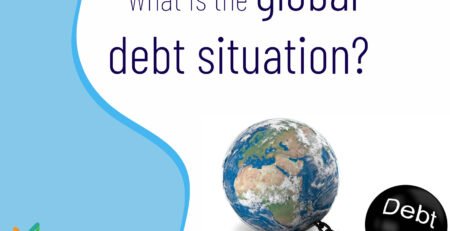Long Term Equity Investment: Why Time is Your Greatest Ally in Wealth Creation
When it comes to building substantial wealth over time, the age-old debate between equity investments, fixed deposits (FD), and Public Provident Fund (PPF) continues to perplex investors. While your FD doubles your money in approximately 10 years and PPF nearly triples it in 15 years, equity investments often face skepticism despite their superior long-term potential. The fundamental truth that many investors overlook is simple: equity doesn’t fail to multiply wealth—investors fail to give it adequate time.
Understanding this concept of long term equity investment is crucial for anyone serious about wealth creation. When you provide equity investments with the same 10 to 15-year horizon that makes FDs and PPFs attractive, equity consistently outperforms most asset classes by significant margins.
The Mathematics Behind Long-Term Wealth Creation
Fixed Deposit Returns: The Predictable Path
Fixed deposits have traditionally been the go-to investment option for conservative investors. With current FD rates hovering around 7-8% annually, your money doubles in approximately 9-10 years using the rule of 72. This predictability offers comfort, but it comes at the cost of limited growth potential.
The mathematical certainty of FDs appeals to risk-averse investors, but this safety net often becomes a wealth trap when inflation is factored into the equation. While your FD might double nominally, the real purchasing power of that doubled amount may actually be less than your original investment when adjusted for inflation over a decade.
PPF: The Tax-Efficient Middle Ground
The Public Provident Fund, currently offering around 7.1% annual returns, presents a more attractive proposition due to its tax benefits. With a 15-year lock-in period, PPF nearly triples your money while providing EEE (Exempt-Exempt-Exempt) tax status. For a ₹1.5 lakh annual investment, you could potentially accumulate around ₹40 lakhs over 15 years.
However, even PPF’s attractive tax-adjusted returns pale in comparison to what equity vs FD returns demonstrate over similar time horizons. The key difference lies in understanding how compound growth accelerates with higher base returns.
Equity Investment: The Exponential Wealth Creator
Historical data spanning multiple decades shows that equity investments in India have delivered average annual returns of 12-15% over long periods. When you apply these returns over 10-15 years, the wealth creation potential becomes exponentially superior to traditional investment options.
Consider this comparison for a monthly investment of ₹10,000:
- FD at 7% annually: ₹17.3 lakhs over 10 years
- PPF at 7.1% annually: ₹31.8 lakhs over 15 years
- Equity at 12% annually: ₹23.2 lakhs over 10 years, ₹50+ lakhs over 15 years
The numbers clearly illustrate why long term wealth creation through equity investment remains unmatched.
Why Time Horizon is Critical for Equity Success
Market Volatility: The Short-Term Noise
One of the primary reasons investors shy away from equity is market volatility. Daily fluctuations, quarterly corrections, and periodic market crashes create an illusion that equity investments are inherently risky. However, this perspective fundamentally misunderstands the nature of stock market investment strategy.
Short-term volatility is merely noise when viewed through the lens of long-term wealth creation. Historical analysis of major stock indices worldwide shows that while markets experience significant short-term fluctuations, the long-term trajectory consistently trends upward.
The Power of Rupee Cost Averaging
When you invest systematically through SIPs (Systematic Investment Plans) over extended periods, market volatility actually works in your favor through rupee cost averaging. During market downturns, your fixed investment amount purchases more units, while during uptrends, you buy fewer units at higher prices. This natural averaging mechanism reduces the overall cost of acquisition and enhances long-term returns.
This strategy is particularly effective for equity mutual funds long term investing, where professional fund management combines with systematic investing to optimize returns across market cycles.
The Psychological Barriers to Long-Term Equity Investment
Instant Gratification vs. Patient Capital
Modern investment psychology is increasingly influenced by instant gratification desires. The digital age has conditioned investors to expect immediate results, making the patient capital approach required for successful long term equity investment increasingly challenging.
However, the greatest fortunes in history have been built through patient capital deployment. Warren Buffett’s holding periods measured in decades, not quarters, exemplify how time in the market consistently beats timing the market.
Fear of Loss vs. Fear of Missing Out
The asymmetric nature of loss aversion means investors feel the pain of a 10% decline more acutely than the pleasure of a 10% gain. This psychological bias leads to premature exits from equity positions during temporary downturns, precisely when long-term investors should be accumulating more shares.
Successful investment time horizon management requires investors to reframe temporary declines as opportunities rather than threats. Historical data shows that every major market correction has eventually been followed by new highs, rewarding patient investors handsomely.
Asset Allocation Strategies for Long-Term Success
Age-Based Asset Allocation
A fundamental principle of portfolio diversification is adjusting asset allocation based on investment time horizon and risk tolerance. The traditional thumb rule suggests subtracting your age from 100 to determine equity allocation percentage. However, with increasing life expectancy and earlier retirement goals, many financial experts now recommend subtracting age from 110 or 120.
For instance, a 30-year-old investor could allocate 80-90% to equity investments, gradually reducing this percentage as retirement approaches. This strategy maximizes the compound growth equity potential during high-earning years while preserving capital as income replacement becomes critical.
Dynamic Rebalancing for Optimal Returns
Effective asset allocation isn’t a set-and-forget strategy. Regular portfolio rebalancing ensures that your risk exposure remains aligned with your investment objectives. During bull markets, equity allocations naturally increase, requiring periodic rebalancing to book profits and maintain target allocations.
This disciplined approach to rebalancing has historically added 0.5-1% to annual returns while maintaining risk parameters, demonstrating how systematic long-term strategies enhance risk-adjusted returns.
Sector Diversification and Geographic Allocation
Domestic vs. International Equity Exposure
While Indian equity markets offer substantial growth potential, global diversification enhances risk-adjusted returns. Allocating 10-20% of equity investments to international markets provides currency diversification and access to global growth themes not available in domestic markets.
International diversification becomes particularly valuable during periods of domestic market underperformance or economic slowdowns. This strategy ensures that your long term wealth creation journey isn’t entirely dependent on single-country economic performance.
Sectoral Diversification Strategies
Successful long-term equity investing requires diversification across sectors and market capitalizations. While growth sectors like technology and healthcare offer high return potential, defensive sectors like consumer staples and utilities provide stability during economic uncertainties.
The optimal approach combines growth and value investing philosophies, with core holdings in diversified large-cap funds supplemented by targeted mid-cap and small-cap allocations for enhanced growth potential.
The Role of Systematic Investment Plans (SIPs)
Disciplined Wealth Accumulation
SIPs represent the most effective mechanism for implementing long term equity investment strategies. By automating monthly investments, SIPs remove emotional decision-making from the investment process while ensuring consistent wealth accumulation regardless of market conditions.
The discipline enforced by SIPs addresses the common investor tendency to time markets, which historically reduces returns. Studies show that investors who attempt market timing underperform those who invest systematically by 2-3% annually.
SIP Top-ups and Step-up Strategies
To maximize wealth creation potential, consider implementing SIP step-up strategies where monthly investment amounts increase annually by 5-10%. This approach accounts for income growth while accelerating corpus accumulation through increased contribution amounts.
For example, starting with ₹10,000 monthly SIP and increasing it by 10% annually can potentially double the final corpus compared to maintaining a static investment amount throughout the investment period.
Tax Efficiency in Long-Term Equity Investment
Long-Term Capital Gains Tax Advantages
Equity investments held for more than one year qualify for long-term capital gains treatment, currently taxed at 10% above ₹1 lakh annual gains. This favorable tax treatment significantly enhances post-tax returns compared to debt investments, which are taxed at marginal income tax rates.
When comparing PPF vs equity comparison on a post-tax basis, equity’s tax efficiency becomes even more pronounced for investors in higher tax brackets. While PPF offers EEE benefits, equity’s combination of growth potential and favorable tax treatment often results in superior post-tax wealth creation.
Tax Loss Harvesting Strategies
Sophisticated long-term investors can enhance returns through tax loss harvesting, where temporary losses are booked to offset capital gains in other investments. This strategy is particularly effective in diversified portfolios where different assets may perform differently across market cycles.
Inflation Protection Through Equity Investment
Real Returns vs. Nominal Returns
One of the most compelling arguments for long term equity investment is its proven ability to beat inflation consistently. While FDs and PPF may offer nominal returns, equity investments have historically provided substantial real returns after adjusting for inflation.
Consider that with average inflation rates of 6-7% in India, a 7% FD return barely maintains purchasing power. In contrast, equity returns of 12-15% provide meaningful real wealth growth, ensuring your future financial goals remain achievable despite rising costs.
Equity as an Inflation Hedge
Companies represented in equity markets typically possess pricing power, allowing them to pass increased costs to consumers during inflationary periods. This inherent inflation protection mechanism makes equity investments natural hedges against currency debasement and rising prices.
Technology and Long-Term Investing
Digital Platforms and Accessibility
Modern technology has democratized equity investing, making it accessible to investors across all economic segments. Digital platforms offer low-cost investing options, comprehensive research tools, and automated portfolio management services that were previously available only to high-net-worth individuals.
These technological advances have significantly reduced the barriers to implementing sophisticated long term wealth creation strategies, making it easier for ordinary investors to build substantial wealth through systematic equity investing.
Robo-Advisory and AI-Driven Strategies
Emerging robo-advisory platforms use artificial intelligence to optimize asset allocation and rebalancing decisions based on individual risk profiles and investment goals. These tools remove emotional bias while ensuring optimal portfolio management throughout the investment journey.
Common Mistakes in Long-Term Equity Investing
Premature Exit Strategies
The biggest mistake in long term equity investment is premature exit during temporary market downturns. Investors who panic during corrections and withdraw investments often realize losses that could have become substantial gains with patience.
Historical analysis shows that markets recover from corrections within 12-24 months on average, while investors who exit during downturns often miss the subsequent recovery periods that generate the highest returns.
Overactive Portfolio Management
Another common error is excessive portfolio churning based on short-term performance variations. Successful long-term investing requires patience and discipline rather than constant activity. Frequent portfolio changes typically reduce returns through transaction costs and timing errors.
Building Your Long-Term Equity Investment Strategy
Goal-Based Investment Planning
Effective investment planning begins with clearly defined financial goals and associated time horizons. Different goals require different strategies:
- Retirement planning (25-30 years): Maximum equity allocation with systematic accumulation
- Children’s education (10-15 years): Balanced approach with gradual debt allocation increase
- Home purchase (5-10 years): Conservative equity allocation with higher debt component
Regular Review and Adjustment
While long-term investing requires patience, it doesn’t mean ignoring your portfolio entirely. Annual reviews ensure your investments remain aligned with changing life circumstances and financial goals. These reviews should focus on asset allocation adjustments rather than individual security performance.
The Future of Long-Term Equity Investment
Emerging Market Opportunities
India’s position as one of the world’s fastest-growing major economies presents unprecedented opportunities for long term wealth creation through equity investment. Demographic advantages, technological adoption, and economic reforms create a conducive environment for sustained corporate earnings growth.
Sustainable and ESG Investing
Environmental, Social, and Governance (ESG) investing is becoming increasingly important for long-term investors. Companies with strong ESG practices often demonstrate superior long-term performance while contributing to sustainable development goals.
Conclusion: Time as Your Greatest Investment Ally
The evidence overwhelmingly supports the superiority of long term equity investment over traditional options like FDs and PPF. While these conventional investments offer safety and predictability, they fall short of creating substantial wealth needed to achieve major life goals and maintain lifestyle standards in retirement.
The key insight isn’t that equity investments are inherently superior—it’s that equity’s potential is fully realized only when given adequate time. Just as your FD doubles in 10 years and PPF triples in 15 years through the power of compounding, equity investment multiplies wealth exponentially when provided the same time horizon.
Success in long-term equity investing requires three fundamental elements: patience to stay invested through market cycles, discipline to invest systematically regardless of market conditions, and faith in the long-term growth potential of well-managed businesses.
For investors willing to embrace these principles, long term equity investment remains the most reliable path to significant wealth creation, consistently outperforming most asset classes when given the gift of time. The question isn’t whether equity can multiply your wealth—it’s whether you’re willing to give it the time it needs to work its compounding magic.
Remember, in the world of investing, time in the market consistently beats timing the market. Your financial future depends not on finding the perfect investment, but on starting early and staying committed to your long-term wealth creation journey through equity investment.











